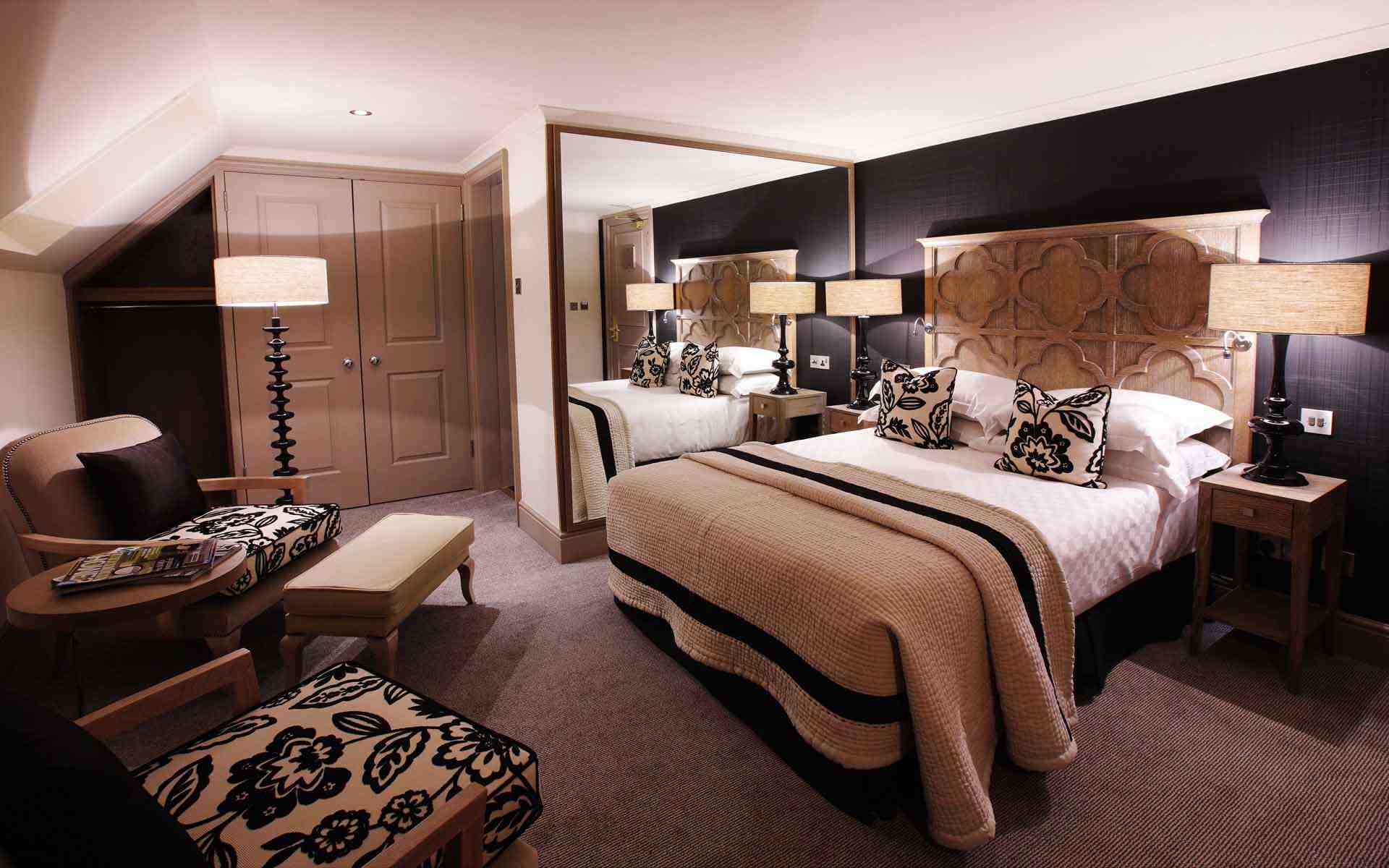Creating a Shared Sanctuary

The bedroom is more than just a place to sleep; it’s a sanctuary, a space for intimacy, relaxation, and personal expression. When designing a bedroom for a couple, it’s crucial to create a space that accommodates both partners’ needs and fosters a sense of shared harmony.
Designing for Individuality and Togetherness
A well-designed bedroom layout strikes a balance between individual and shared spaces. Consider incorporating dual-sided nightstands, separate reading nooks, and a shared dressing area to cater to both partners’ preferences.
- Dual-Sided Nightstands: Dual-sided nightstands provide each partner with their own personal space for essentials like books, lamps, and alarm clocks. This allows for individual nighttime routines while maintaining a sense of closeness.
- Separate Reading Nooks: A dedicated reading nook for each partner creates a quiet and cozy retreat for indulging in personal interests. This could be a comfortable armchair with a side table or a built-in bookshelf.
- Shared Dressing Area: A shared dressing area promotes a sense of togetherness while streamlining morning routines. Consider a spacious closet with ample storage for both partners’ wardrobes, a vanity with dual mirrors, and comfortable seating.
Color Palettes and Textures
The choice of color palettes and textures can significantly impact the overall atmosphere of the bedroom. Opt for colors and materials that reflect the couple’s individual personalities while creating a cohesive and inviting space.
- Neutral Base with Pops of Color: A neutral base, such as white, beige, or gray, provides a calming and versatile backdrop. Introduce pops of color through accent walls, bedding, artwork, or throw pillows to reflect the couple’s unique personalities. For instance, one partner might prefer bold hues like teal or crimson, while the other might lean towards softer shades like lavender or peach.
- Textural Contrast: Incorporating different textures adds depth and visual interest to the bedroom. Combine soft fabrics like velvet or linen with textured materials like wood, leather, or metal. For example, a plush velvet headboard paired with a rustic wooden nightstand creates a luxurious and inviting contrast.
Functionality and Comfort: Best Bedroom Interior Design For Couples

A bedroom should be a sanctuary, a place where you can unwind and relax. To achieve this, functionality and comfort are paramount. It’s about creating a space that meets your needs and caters to your shared preferences.
Best bedroom interior design for couples – Creating a functional and comfortable bedroom for couples requires a thoughtful approach to furniture selection, lighting, and space utilization. This section will delve into the key elements that contribute to a harmonious and enjoyable shared space.
Bedroom Furniture for Couples, Best bedroom interior design for couples
Choosing the right furniture is crucial for a comfortable and functional bedroom. Essential pieces include a king-size bed, ample storage solutions, and a cozy seating area.
- King-Size Bed: A king-size bed provides ample space for two people to sleep comfortably, ensuring restful nights and a sense of spaciousness. It’s an investment in your sleep quality and overall well-being.
- Storage Solutions: A bedroom should be a clutter-free haven. Incorporate storage solutions like built-in wardrobes, drawers, and bedside tables to keep belongings organized and easily accessible. This minimizes visual clutter and promotes a sense of calm.
- Comfortable Seating Area: A dedicated seating area can transform your bedroom into a versatile space for reading, conversation, or simply relaxing. Consider a plush armchair, a cozy loveseat, or a small sofa, depending on the size of your room.
Optimizing Bedroom Lighting
Lighting plays a vital role in creating the right ambiance for your bedroom. It’s about achieving a balance between functional and mood-setting illumination.
- Overhead Lighting: A central ceiling fixture provides general illumination for the room. Opt for a dimmer switch to adjust the brightness according to your needs.
- Bedside Lamps: Bedside lamps offer focused light for reading or relaxing before bed. Choose lamps with warm, inviting light bulbs for a cozy atmosphere.
- Accent Lighting: Incorporate accent lighting to highlight artwork, decorative elements, or architectural features. This adds depth and visual interest to your bedroom.
Maximizing Space and Functionality
Efficient space utilization is key to a functional bedroom. Clever storage solutions and strategic furniture placement can make a significant difference.
- Built-in Wardrobes: Built-in wardrobes maximize storage space and provide a streamlined look. They are especially beneficial in smaller bedrooms.
- Floating Shelves: Floating shelves create a sense of openness while providing additional storage for books, decorative items, or personal belongings.
- Under-Bed Storage: Utilize the space under the bed with storage drawers or bins. This keeps items out of sight and maximizes the room’s vertical space.
Style and Aesthetics
.jpg)
The style and aesthetics of your bedroom are crucial for creating a space that reflects your personal taste and fosters a sense of tranquility and intimacy. Choosing a design style that resonates with you and your partner will create a shared sanctuary that feels both visually appealing and emotionally comforting.
Exploring Different Interior Design Styles
Interior design styles offer a vast range of options to personalize your bedroom. Each style evokes a unique ambiance and caters to different preferences. Here are some popular styles and their characteristics:
- Minimalist: Characterized by clean lines, a neutral color palette, and minimal decor. This style prioritizes functionality and simplicity, creating a sense of calm and spaciousness.
- Bohemian: Embraces a free-spirited and eclectic approach, featuring vibrant colors, global textiles, and vintage furniture. This style fosters a sense of creativity and individuality, reflecting a love for travel and diverse cultures.
- Modern: Known for its sleek lines, geometric shapes, and use of natural materials. This style emphasizes functionality and a contemporary aesthetic, creating a sophisticated and refined atmosphere.
- Traditional: Often incorporates classic elements such as ornate furniture, rich fabrics, and warm color palettes. This style exudes a timeless elegance and creates a sense of history and comfort.
